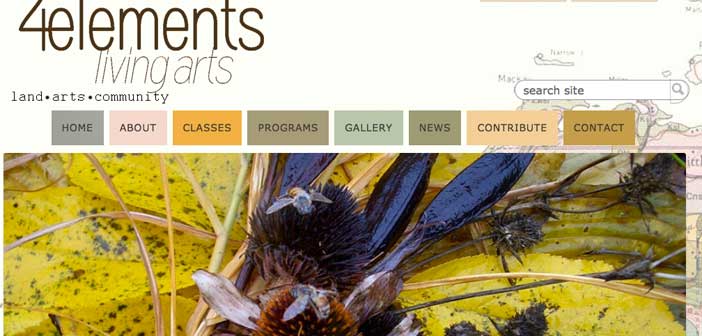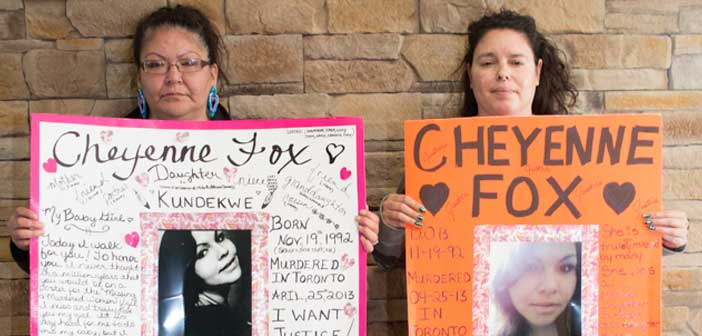by Heather Pennie
MANITOWANING—‘Every Quilt Tells a Story,’ the title of the quilt show held at the Debajehmujig Creation Centre in Manitowaning, certainly rings true. The 2014 Hawberry Quilt Show, which is a collaboration between the Debajehmujig Storytellers and the Island Quilters Guild, is leaving attendees with stories of their own to tell about the amazing display.
At the quilt show’s opening reception, Josh Peltier, an artist with Debajehmujig, explained how the quilt show was a natural fit for their group. According to Mr. Peltier, Debajehmujig means “storyteller.” Many stories can be told through art, which has been an area that Debajehmujig has been developing. “And now we’re breaking in to the quilt world,” Mr. Peltier exclaimed. He did note that in getting ready for the show’s opening, they found that hanging quilts is more challenging than the paintings and photographs that they are used to.
The show features over 100 quilts, each of which presents the vision of its creator. These pieces of textile artistry demonstrate incredibly variety, ranging from quilts that have won top-honours across the continent, to the first-time creations of local children.
But the star of the show, it must be said, is the Quilt of Belonging, which tells the story of all Cana

Canada. The colours used in her depiction represent the Four Directions.
dians. Kathy Grant, quilt show chair of the Island Quilter’s Guild, noted that the idea behind the show was hatched in a very off-hand way. “Myra Tallman flippantly said to me, ‘if you’re going to have a quilt show on Manitoulin, why don’t you have the Quilt of Belonging’?”
Esther Bryan, the artist who conceived the idea behind the grand quilt, was excited to be on Manitoulin with the masterpiece. The quilt was pieced together in a tiny community of 250 people, so small towns are nothing new to her. “It feels like home here,” she said.
Ms. Bryan has travelled throughout Canada and the US and explained the importance to her of being able to share the quilt everywhere. “It was made for all,” said Ms. Bryan, “and we made the choice to take the risk and go where it was needed.”
There are unique stories about how the quilt has travelled, including how it spent two and a half months crossing the Canadian arctic, “even on the back of a skidoo.” Getting to Manitoulin Island also turned out to be an adventure. For a while, they weren’t sure how they were actually going to get the enormous 36 metre-long quilt here
“The quilt nearly didn’t make it here,” Ms. Bryan said. But not letting anything deter them, her small community banded together, custom-built a trailer to hold the quilt and they drove it to Manitoulin.
For Ms. Bryan, the message of belonging is an important one. The quilt is comprised of 263 blocks that represent all of the

70 aboriginal groups and 193 immigrant nationalities in Canada. “It’s important for all of us to realize that all people are special,” explained Ms. Bryan. The quilt is a “reminder and a vision of how the world could be.”
Two of the quilt’s squares were created by Wikwemikong artisans. Marlene Shawanda chose the rose for her work of art representing the Ojibwe people. She never imagined that she would one day get to see the completed quilt in person. “It’s real awesome!” she enthused.
Shirley Pitawanakwat is the creator of the Odawa quilt block. “We were asked what kind of stuff Natives would have,” said Ms. Pitawanakwat. “I used deer hide and felt…I remembered we used to wear felt shoes when we were kids. The brown and green trimming reminds me of the forest…and the vines show we are all connected.”
The Quilt of Belonging is a masterpiece for all to see and hear its story. The youngest member to work on the quilt was a two-year old on a grandmother’s lap, while the eldest was 92 years of age. Ms. Bryan spoke of children, and feels that it is very important that they hear the quilt’s story as well. “We need to find a way to live with our neighbours, and there is a balance between privilege and responsibility. My rights and what I do impacts my neighbours. I think it’s really important that we teach our children that.”
The quilt show will be hosting school groups so that the youth may have a chance to see the famous Quilt of Belonging and take part in learning activities to help hear and understand the message behind the quilt.




